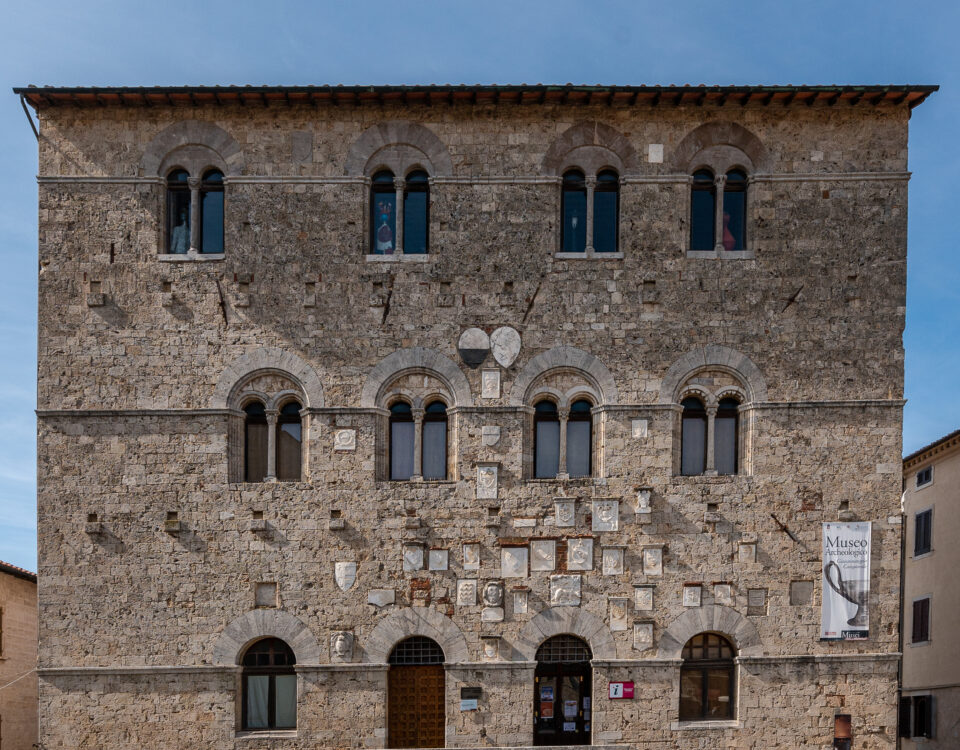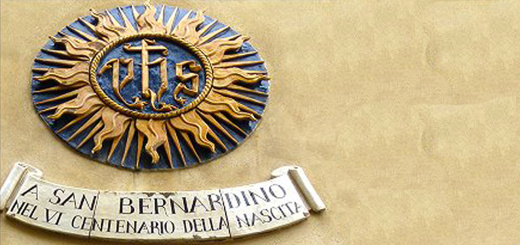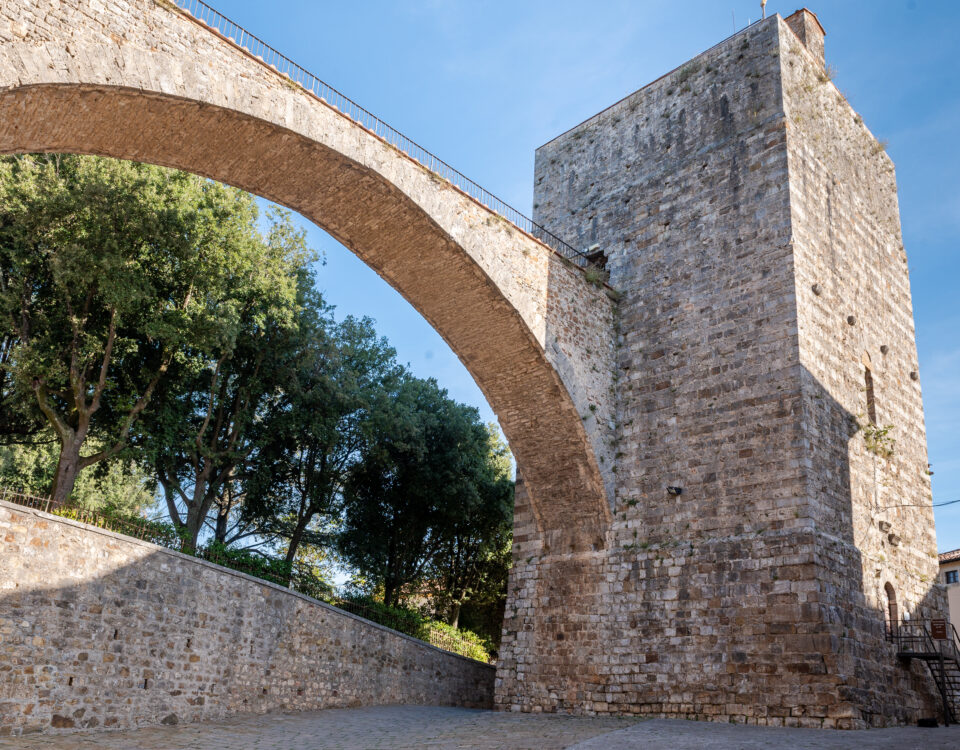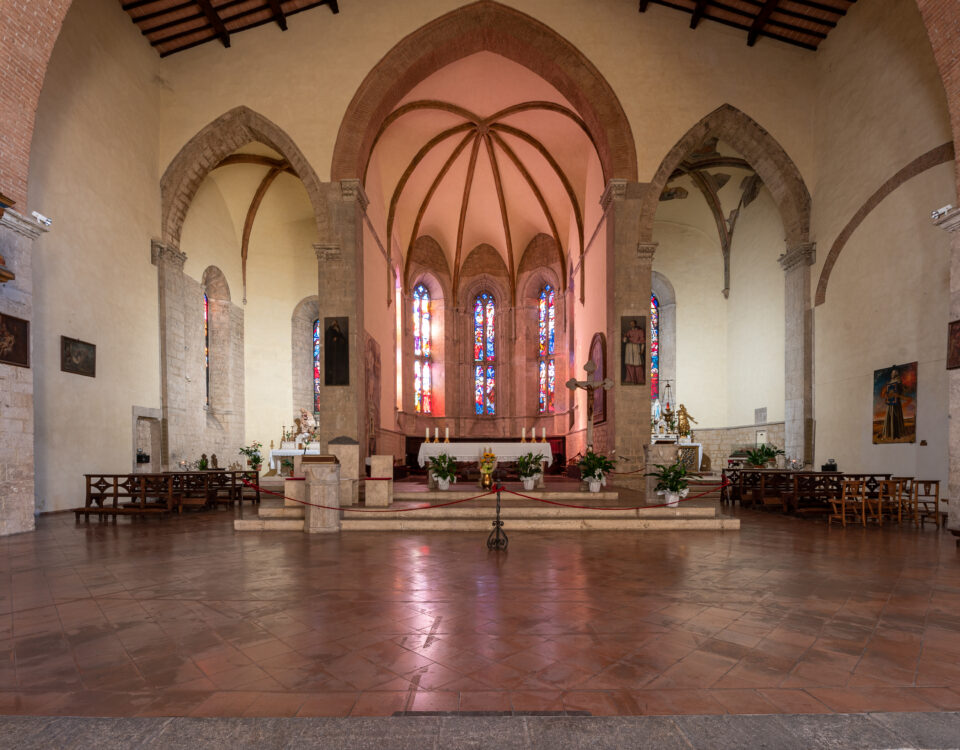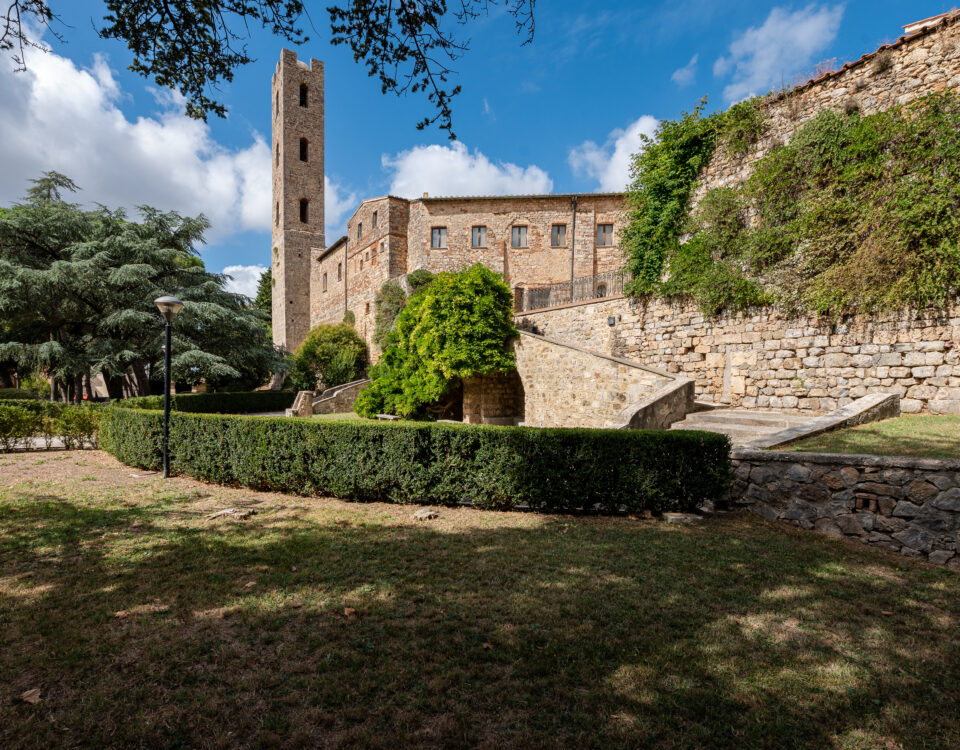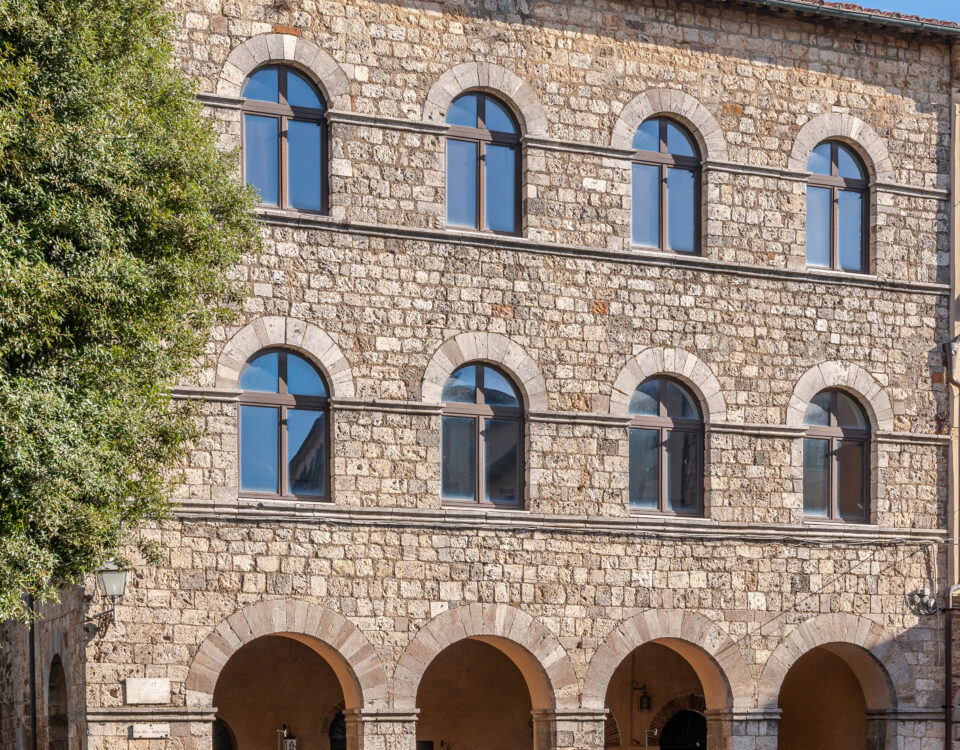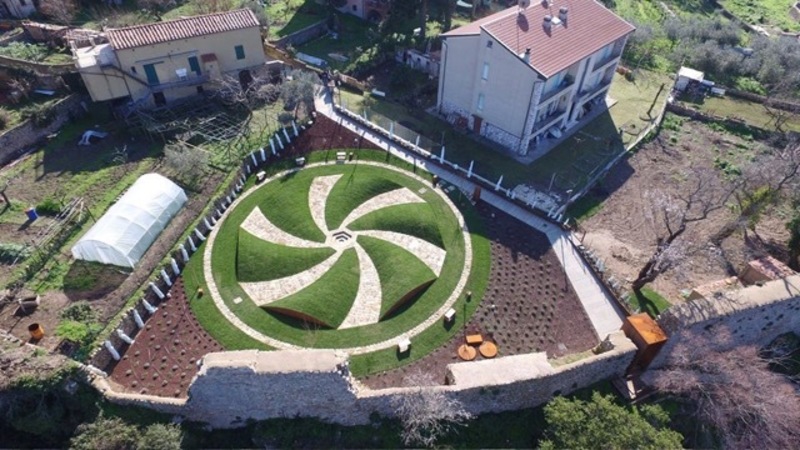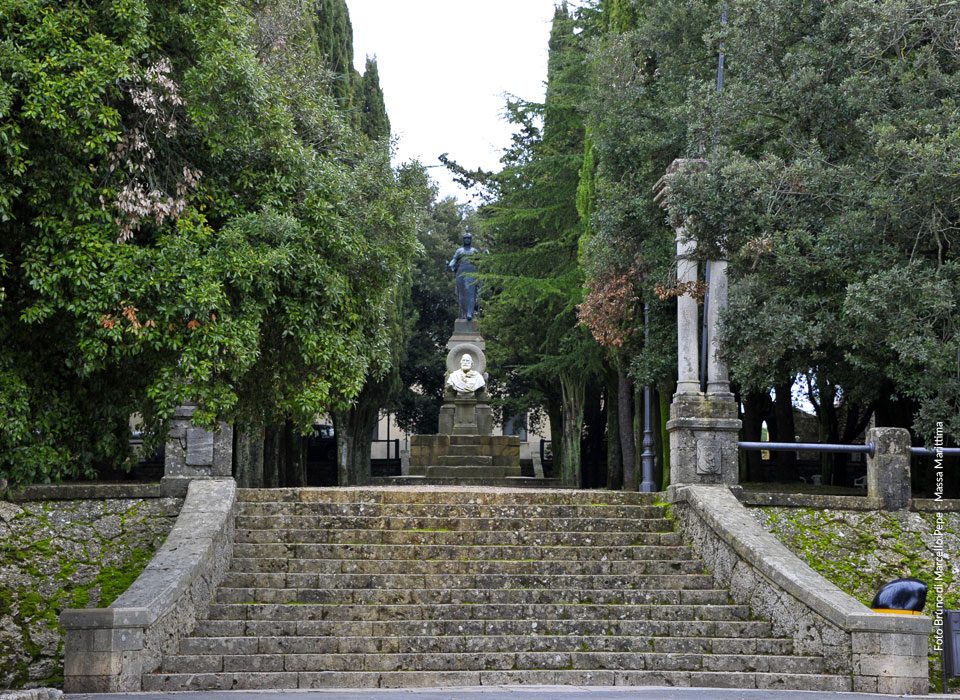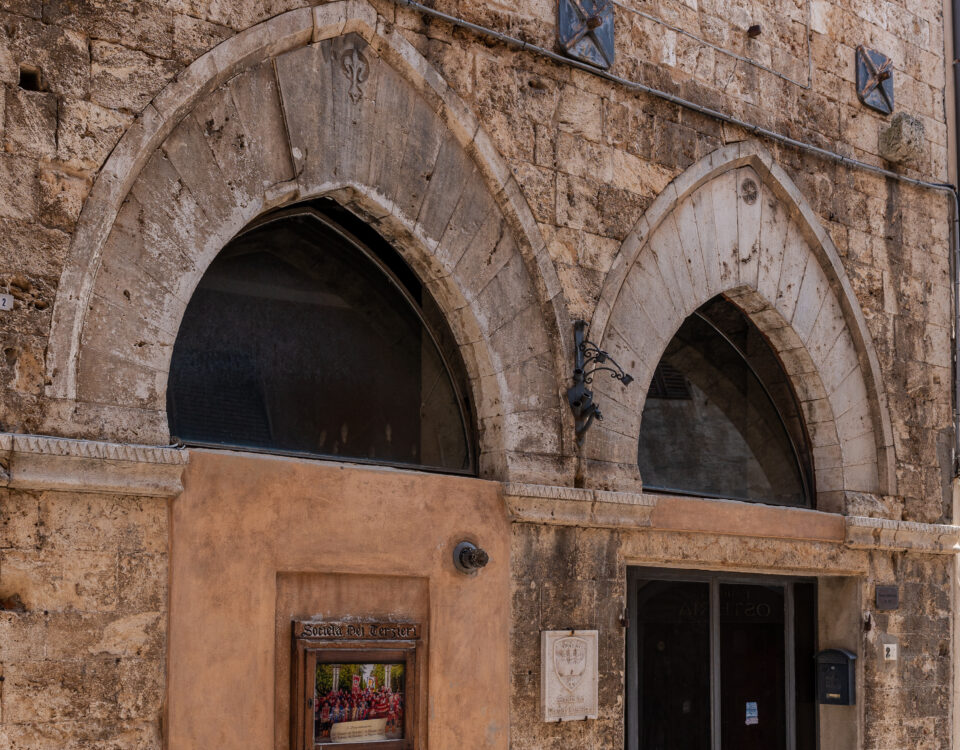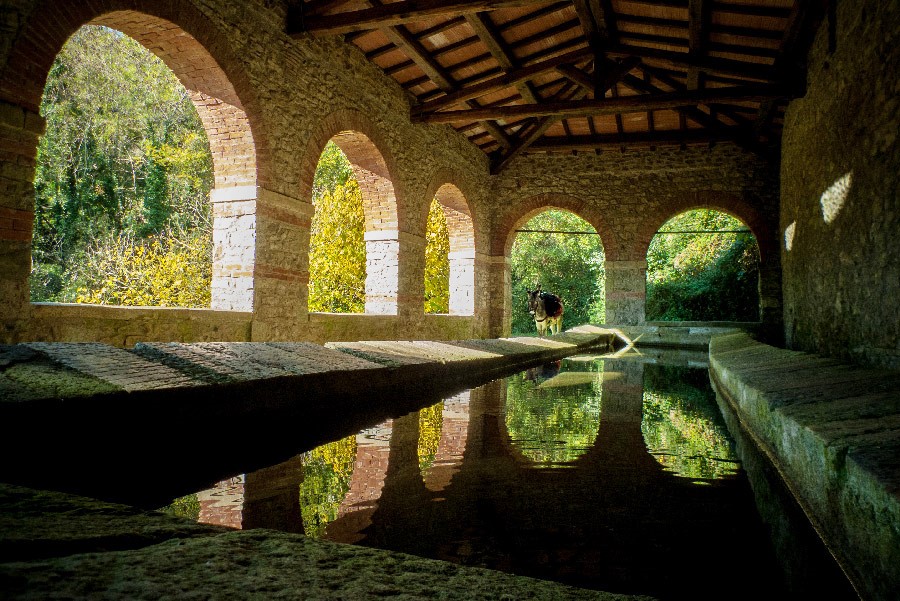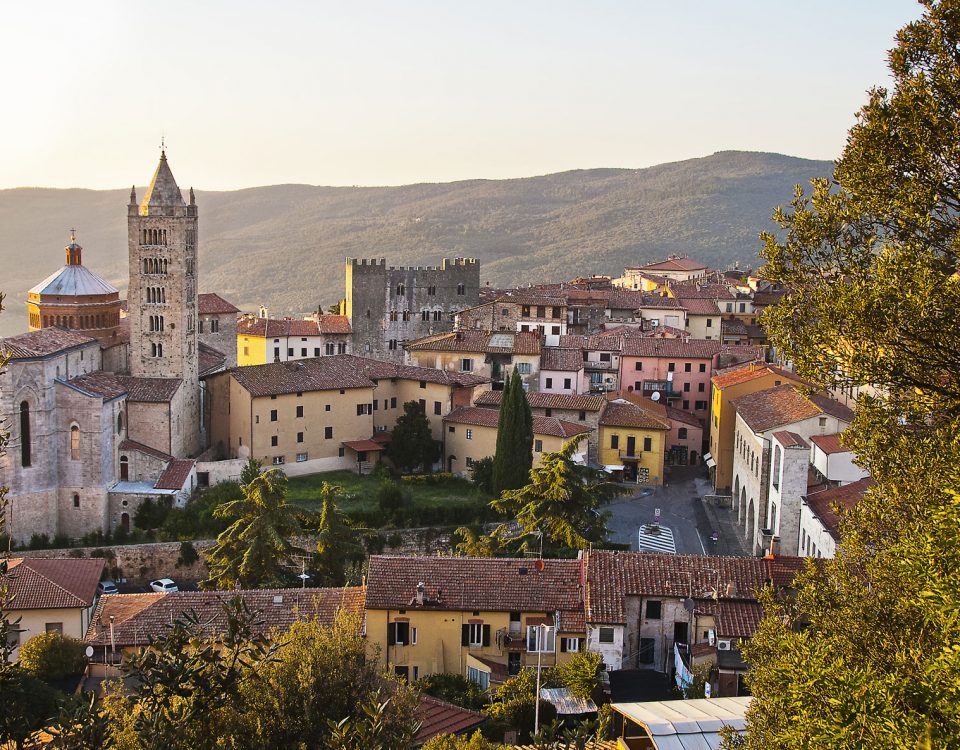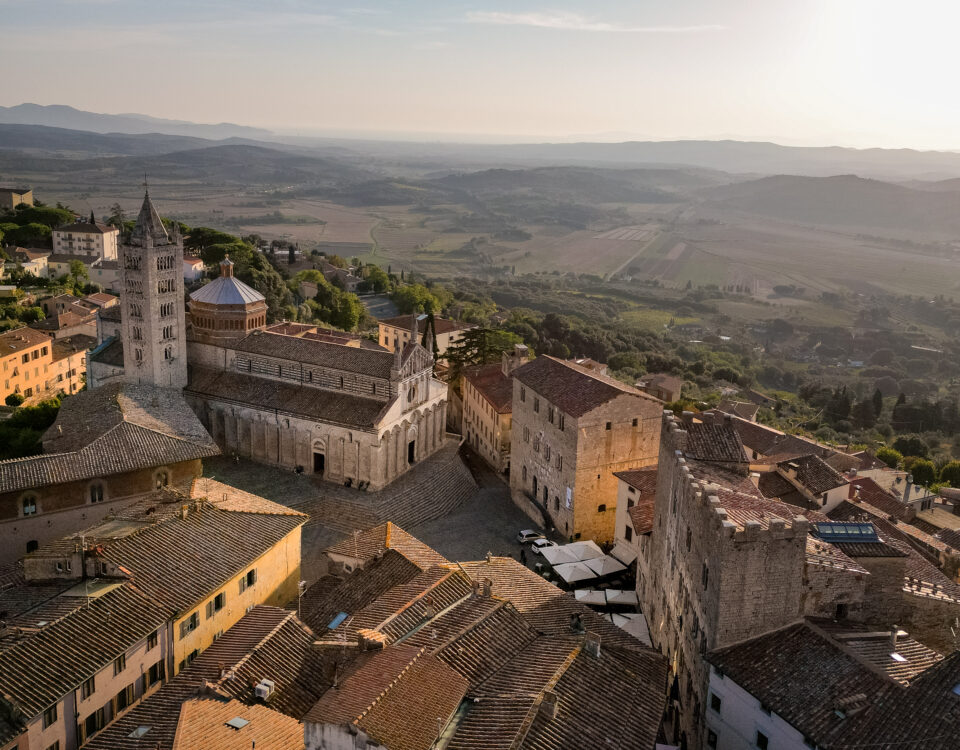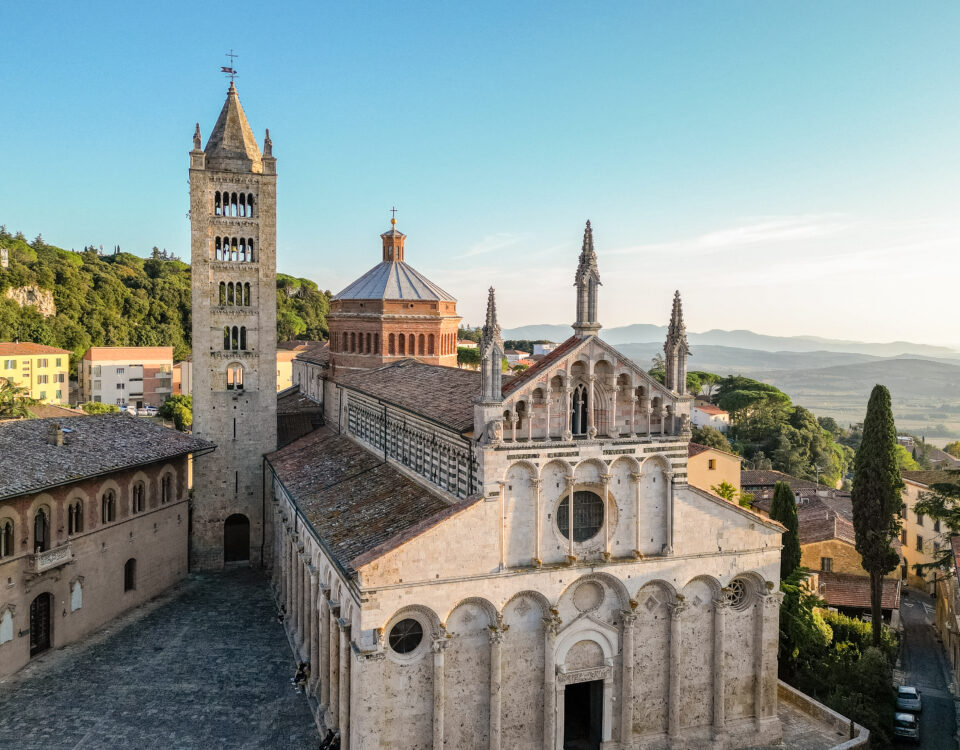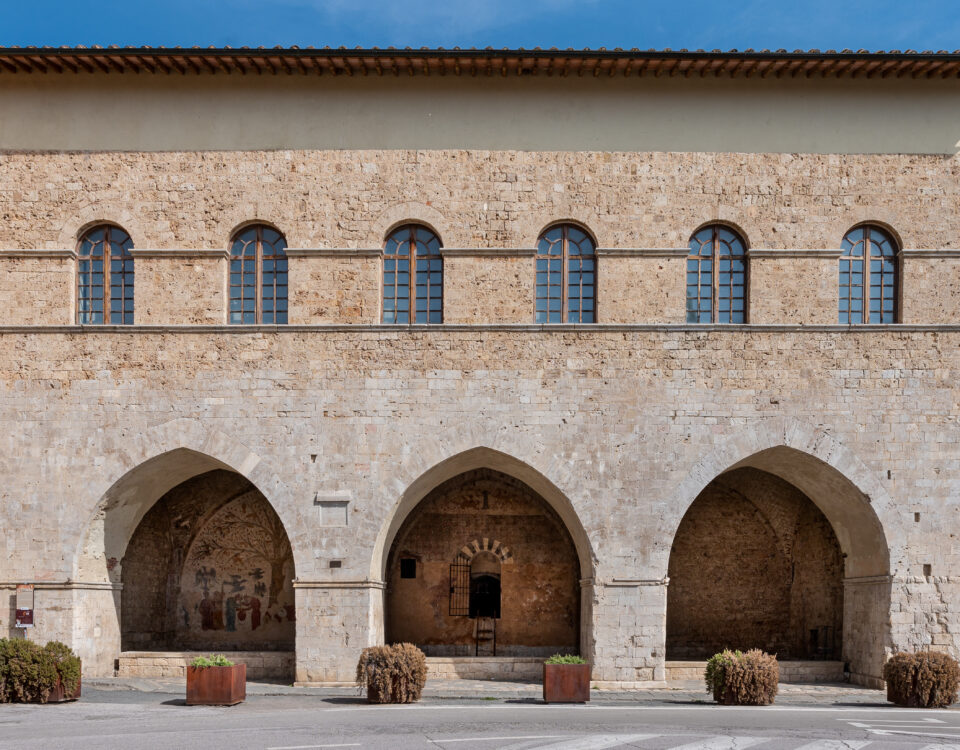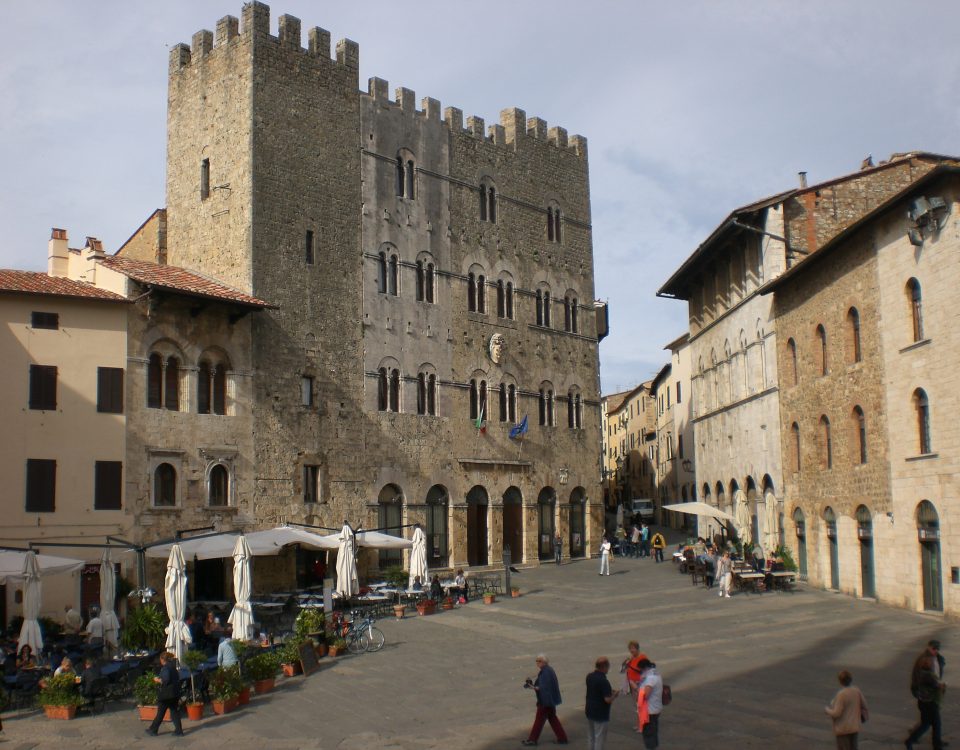Massa Marittima is located on the western side of the Colline Metallifere chain (Metalliferous Hills), about 400mt above sea level and approximately 18km from the coast. The surrounding area is covered in Mediterranean shrub, vineyards and olive fields. Massa Marittima has been inhabited since the Proto-historic Era and its mineral resources were already used for mining purposes during the Etruscan period. Lots of small mediaeval villages spread in the whole area and especially on top of the hills due to defensive reasons.
The hill where Massa Marittima rises slowly turns into a flood plain as you approach the seaside. The area along the coast used to be a lagoon until the end of the XVIII century, when a drainage system was finally built up. The medieval village of Massa Marittima is divided in three different neighbourhoods or “Terzieri”: “Città Vecchia”, “Città Nuova” and “Borgo”. Città Vecchia, the Old Town, develops around Piazza Garibaldi, where all the most important public buildings were built. The New Town is the upper part of the city centre: there you can find the Sienese Fortress and the Torre del Candeliere. The lowest medieval neighbourhood is Borgo, with its Palazzo della Zecca, the mint of Massa Marittima.
A little bit of history The name has roman origins: the word “massa” was used to designate a series of lands ruled under the same administration, while “marittima” was eventually employed towards the end of the XVIII century to indicate its proximity to the coast (mare: sea). The fate of Massa Marittima is strictly linked to the abundance of minerals hidden under ground and to the peculiar morphology of the area, particularly favourable for a human settlement. The village reached its height between the XIII and XIV centuries, when it was declared Libero Comune, an independent City, but many archaeological rests have been found that prove the existence of human population in the area already around 11.500 years ago (Epipaleolithic). The socalled Vado all'Arancio cave, discovered in the '80s next to Cura Nuova is an example. Another impressive yet totally fortuitous archaeological discovery took place in the same area in the '50s: an anthropomorphic Eneolithic slab of stone dated around 5000years ago, which is nowadays exposed in the Archaeological Museum of Massa Marittima, together with a wide variety of artefacts. The area is actually full of natural caves that have been used over the millennia as shelter. Another proof of what just said is the finding in 1958 of Sandrone's fossils, the Oreopithecus bambolii who used to live in the area around 8million years ago. The first actual organized settlements came to life in the IX century b.C, in proximity to the Accesa Lake, roughly 10km away from Massa Marittima. The excavation campaigns run in the '20s and then later on in the '80s brought to light five Etruscan residential units organised in clans. Their main activity was the extraction of minerals, such as iron, silver, copper and lead, which were sent to the Etruscan city of Vetulonia. The medieval urban structure of Massa Marittima started to take shape only from the VIII century a.C. when, for defensive reasons, the feudal lords moved from the coastal area to the inner, hilly sites. From the XII century a.C. Massa Marittima was developing around the Monteregio Castle, back then used as the Bishop's headquarter. By the XIII century the city reached the most powerful and richest phase of its whole life: thanks to the mining activities, Massa Marittima earned so much money that it could buy its independence from the Church and in 1225 it was declared Libero Comune. But a long, decadent chapter started in 1335, when Massa Marittima was conquered by Siena: the area was subject to a great depopulation process, loss of economic power and eventually famine and pestilence. It was only in 1737 that the city started to show an economic recovery: the Lorena Family began to reclaim the lands, invest in infrastructures and revive the mining activities. The mining industry was the local economic foundation even at the end ot the XIX century: lots of mines started to spread in Montebamboli, Fenice Capanne, Gavorrano, Boccheggiano and Niccioleta until 1994, when the last mining site was eventually closed down.




